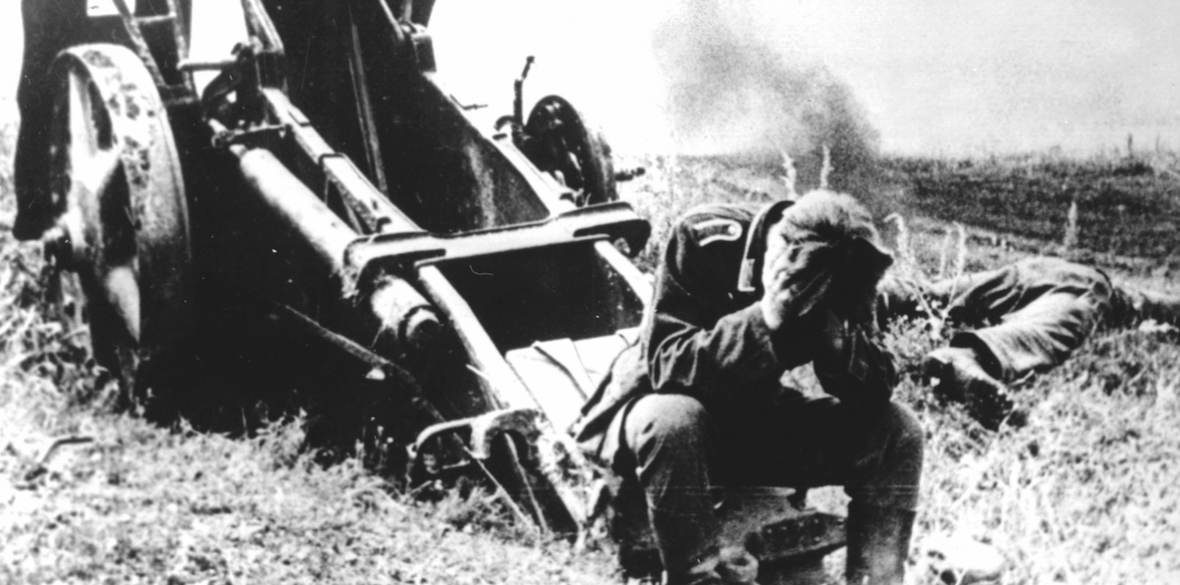This is the last article you can read this month
You can read more article this month
You can read more articles this month
Sorry your limit is up for this month
Reset on:
Please help support the Morning Star by subscribing here
IN July 1943, 80 years ago, WWII, inherently horrific, as is all war, became still more so. On July 5, south-west of Moscow, a massive tank-centred attack by Nazi Germany commenced against the westward-leaning Kursk “bulge,” located between Nazi-occupied Orel and Belgorod, more than 150 miles further south.
Five days later, substantial landings of Western Allied forces took place in Sicily.
Information received in Britain about progress in both places was inevitably limited. On July 13 the Daily Worker commented: “The two battles, in Sicily and at Kursk, grow in intensity. The next days and hours are an anxious period in which big issues will be decided.” Two days later the paper announced: “From both the news is good.”
Close to half a million US soldiers (roughly half and half British and American) had been landed in Sicily, and well over a million Soviet defending troops in the Kursk salient faced 900,000 attackers relying on 2,700 tanks. Far more attention was given by Britain’s primary press commentators to the Italian developments (which, after all, involved many British troops) than to the largest set-piece battle in history for the Kursk salient.
The rapid progress of the Sicily operation was to end the personal rule of Italy’s fascist dictator Benito Mussolini through a vote of the Fascist Grand Council in Rome on July 25. On the Eastern front, the Nazi endeavour collapsed within a week and was succeeded by a relentless counter-attack by Soviet forces.
On July 25, coincidentally, the press reported Soviet leader and dictator Josef Stalin’s announcement that the German summer offensive had been “completely frustrated.” In early August both Orel and Belgorod were recaptured, and further pushes soon forced a wide-front retreat westwards of German forces towards the Dnieper and beyond.
In his book Russia’s War, the formidable historian Richard Overy writes the Kursk battle “ended any realistic prospect of a German victory in the east.”
Allied control of Sicily, achieved by August 17, was followed by landings on the mainland in September, and, despite Italy’s formal surrender announced on September 8, by the continuation of fascist rule under Mussolini’s military agent Marshal Badoglio in allied-controlled territory.
Some 19 German divisions now occupied northern and central Italy. Allied forces now began to crawl up Italy’s spine, greatly impeded by the mountainous terrain, as well as by fierce Nazi defence. Rome was not to be taken by the Allies until early June 1944. Meanwhile, the Soviet Red Army, as had been the case since the invasion on June 22 1941, faced most of the strength of the Nazi military machine.
A minor distraction (as the Kursk battle began) was a fantasy announcement by under-secretary of war and ardent imperialist Lord Croft, who declared that Hitler might now try an airborne attack on Britain. This extreme improbability was evidently aimed at justifying the delay in arranging an early Allied landing in France and thereby discouraging the continuing campaign for such a landing.
“What holds us back?” asked the Daily Worker on July 30, “Not the lack of men. There are huge British and American forces not yet engaged. Nor the lack of material…”
The dismissal of a Second Front in France by the Western Allies had been the work primarily of Winston Churchill and his military chiefs in the summer of 1942, overriding the sustained preference of US president Roosevelt and his own commanders.
Instead, a weak substitute was instigated by the arrival in west Africa in November 1942 of a substantial US-British force, which, though advancing with difficulty to Tunisia, succeeded in driving German and Italian forces out of the continent.
Then came the Sicily landing. A real Second Front in France would have sent west to deal with it many of the three-million-plus Eastern front German soldiers (and many tanks), forming 173 divisions, thereby probably shortening the war.
The Daily Worker’s response on July 26 to Mussolini’s fall from grace was explicit: “The whole world rejoices. A tyrant — bloody monstrous and filthy — has fallen.”
But what was to follow? Churchill (already guilty through requisitioning policies of a millions-dead famine in India), was certainly happy for King Vittorio Emmanuele and Badoglio to be in control, as his confidential message to Roosevelt on August 5, approving a report from an Italian source, reveals:
“There is nothing between the king, with the patriots (that is, Badoglio and company) who have rallied round him, who have complete control, and rampant Bolshevism.”
Left-wing Labour MP Aneurin Bevan (and future Labour health minister) on August 3 pointed in the Commons to past British complicity with fascism:
“There are many members in this house who have no complaint against fascism, except when it is strong enough to threaten them …The whole fascist set-up was supported by a majority of this house and connived at by them because Italy was not strong enough to threaten Great Britain.”
A similar argument applied to Hitler’s Germany, with the addition that British support had encouraged Nazi plans for an assault on the Soviet Union as its principal adversary, and was only withdrawn when dangers for Britain and its empire became unacceptable.
But demands for democracy in place of fascism were now raging in Italy, and would eventually force a back-down by Allied governments and commanders, enabling Badoglio’s replacement by a popular unity coalition (including Italian Communist Party leaders) in June 1944.
The Daily Worker had reminded readers of the struggle to come on July 13: “One thing must never be forgotten on the home front. Even such titanic efforts by our forces and those of our allies as are necessary to win these battles are only a beginning. They only open the way to more and fiercer battles, in Italy itself, in France, in the Balkans and towards central Europe before the enemy is overcome.”
On the Eastern front, the recapture of occupied towns exposed Nazi atrocities. British war correspondent in Moscow Alexander Werth (who decades later authored Russia at War), visited a devastated Orel in September 1943 and was told that 12,000 of its inhabitants had been murdered by the Nazis and about twice as many deported to Germany, while plenty of others had joined the partisans in the forests.
In the Sicilian campaign, the figure for British losses of killed and missing was around five thousand. In the Kursk battle 70,000 Soviet soldiers died and another 183,000 were lost in the break-through westwards that followed.
The politics of Italy’s surrender to the Western Allies were to have long-range implications. Although Stalin in August 1943 proposed a military-political commission to deal with Italy’s surrender (and other future surrenders), shared equally between the USSR and the Western Allies, the latter was to insist that the Soviet Union would have only a nominal role in Italy’s case.
This undermined the 20-year Anglo-Soviet Treaty of late May 1942 which, as the Daily Worker stated on August 2, had prescribed that the participating governments undertook “not to negotiate or conclude except by mutual consent any armistice or peace treaty with Germany or any other State associated with her in acts of aggression in Europe.”
Italy “belonged to” the West’s “sphere of influence,” setting the future pattern. So in December 1944, in the West’s “sphere,” Churchill was responsible for inflicting a savagely reactionary post-war Greek regime (mirroring the pre-war dictatorship) with the help of British troops.
On the other hand, when the Red Army liberated Nazi-occupied eastern European countries, it followed that they would be treated as within the USSR’s ambit. The “spheres of influence” forced compromise is elaborated in US historian Gabriel Kolko’s The Politics of War.
Pre-war Western friendliness to fascism and hostility to Soviet communism (whatever its level of democracy), coupled with the war-time refusal of a Second Front and insistence on Western “spheres of influence,” suggested that the world’s post-war future would be grim, wherever radical movements for democratic socialist advance failed to make their mark. In Britain, France and Italy the pressure for such change was to prove unstoppable, as was the movement for India’s independence.
John Ellison is the author of the new book World War Two: A People’s War.










